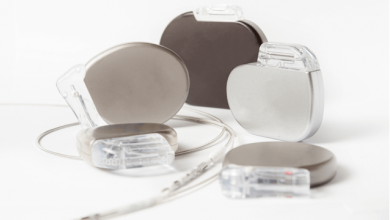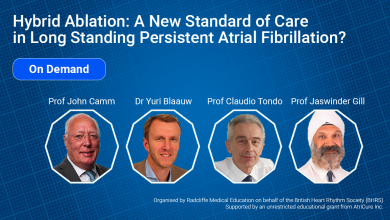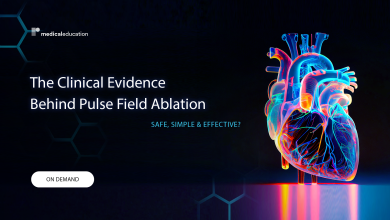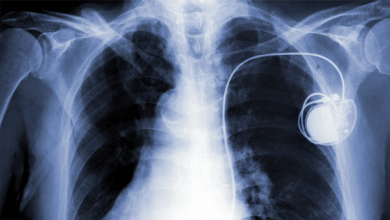Search results
Author(s):
Niraj Varma
,
Renato Pietro Ricci
,
Loredana Morichelli
Added:
3 years ago
Monitoring after implant of patients with cardiac implantable electronic devices (CIED) forms a part of both device and patient care, and is the responsibility of the implanting centre. Monitoring is challenged by the increasing number and technical complexity of implanted devices coupled with the increasing clinical complexity of the patient population. Current practice is based on quarterly to…
View more
Controversy Surrounding ROCKET-AF: A Call for Transparency, But Should We Be Changing Practice?
Author(s):
Jason D Matos
,
Peter J Zimetbaum
Added:
3 years ago
Article
Author(s):
David J Callans
Added:
3 years ago
Total Recall
Mark’s intellect seems to have been the driving force of much of his behaviour. His gifts were substantial. He apparently had a total recall memory on all sorts of topics, not only cardiac electrophysiology and electrocardiography, but details of individual patients, Patriots football, fine wine and much more internal medicine than I have ever mastered. He was in the habit of…
View more
Hybrid Ablation
Video Series
Author(s):
Vivek Reddy
,
Boris Schmidt
,
Josef Kautzner
,
et al
Added:
10 months ago
In this engaging video series, we are joined by an esteemed faculty, co-chaired byDr Claire Martin(Royal Papworth Hospital, UK) andProf Josef Kautzner(Charles University Medical School, Czech Republic) who will present and discuss a series of topics surrounding the clinical evidence behind pulsed field ablation (PFA).
Dr Vivek Reddy(The Mount Sinai Hospital, US) andDr Boris Schmidt(Centrum…
View more
Human Atrioventricular Node
Author(s):
Demosthenes G Katritsis
Added:
3 years ago
Article
Author(s):
Tyson S Burnham
,
Monte L Scott
,
Benjamin A Steinberg
,
et al
Added:
2 years ago
Author(s):
Haran Burri
Added:
3 years ago
Patients implanted with a pacemaker (PM) or implantable cardioverter defibrillator (ICD) require regular follow-ups to control the proper function of the implanted device. These technical checks have traditionally been performed manually in-office using a dedicated device programmer. In 1971, transtelephonic monitoring was introduced to remotely follow-up basic parameters (such as battery status…
View more
Author(s):
Joshua R Silverstein
,
Demosthenes G Katritsis
,
Mark E Josephson
Added:
3 years ago
Sudden cardiac death (SCD) is one of the leading causes of death in developed countries. The yearly incidence of SCD is estimated to be 3,000,000 worldwide and between 300,000–450,000 in both the US and Western Europe.1,2 The survival rate for SCD is <1 % worldwide and close to 5 % in the developed world.3 In the past, cardiac arrest was thought to be most commonly due to ventricular…
View more















